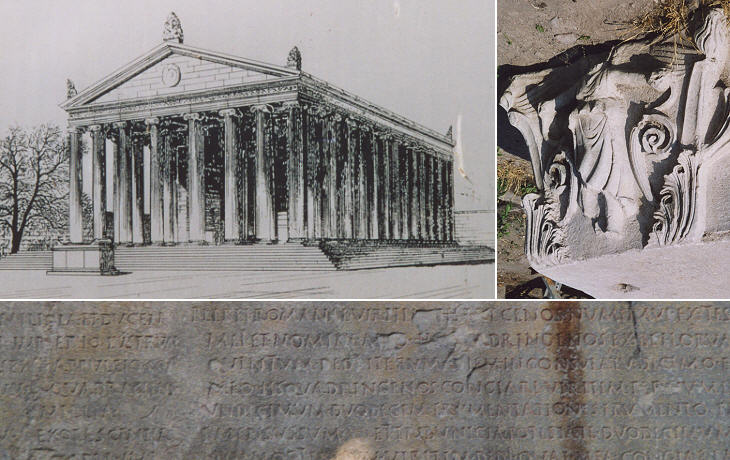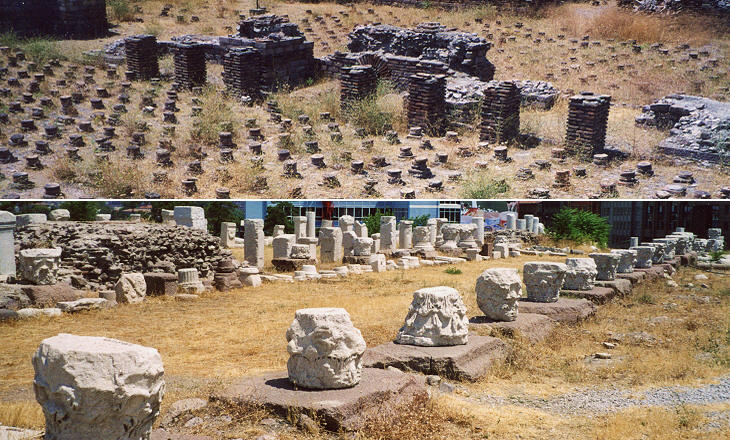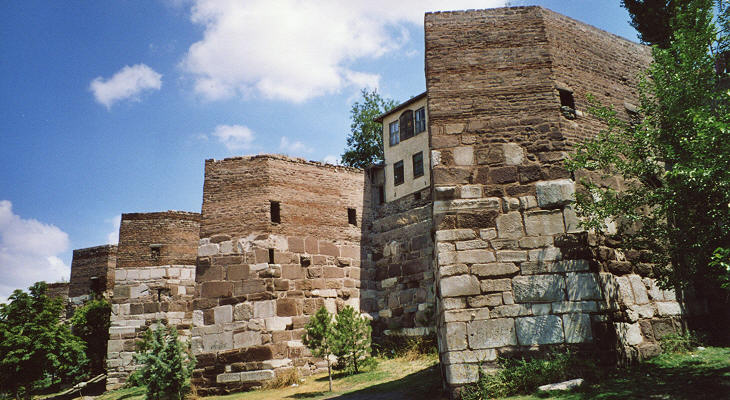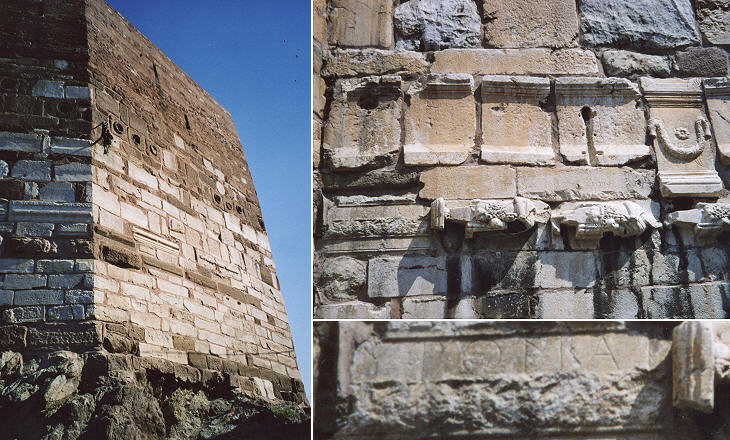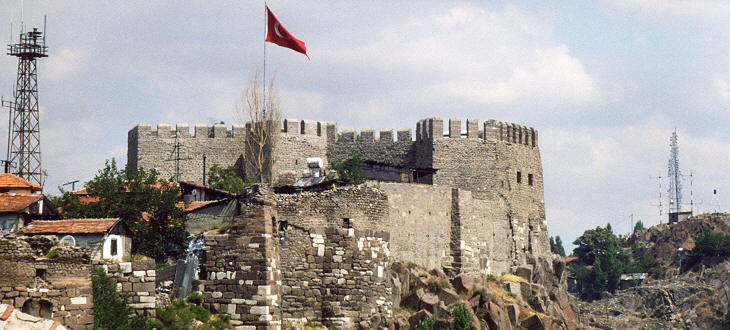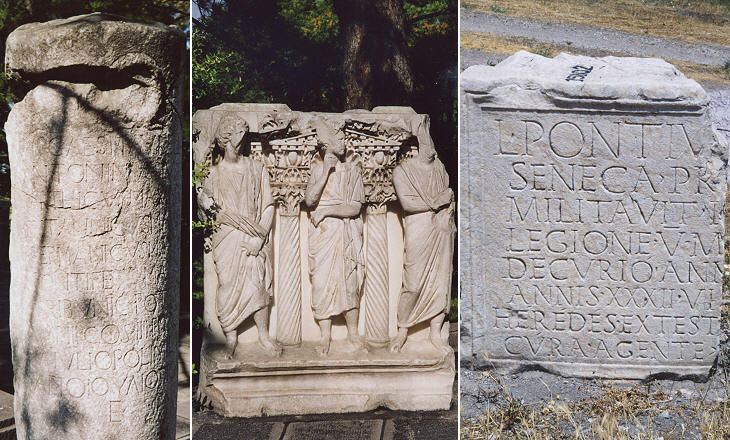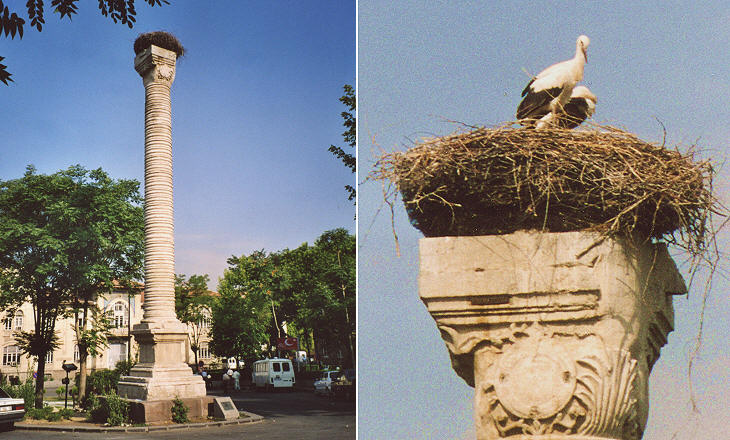  What's New! Detailed Sitemap All images © by Roberto Piperno, owner of the domain. Write to romapip@quipo.it. Text edited by Rosamie Moore. Page added in September 2003. |
 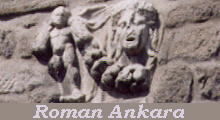
In 1923 MustafÓ Kemal, as part of his nation building effort, selected the town of Ankara as capital of the newly founded Republic of Turkey. The decision to abandon "Konstantiniye" (Constantinople, which was a few years later officially renamed Istanbul, a word of Greek origin meaning "this is the town") was due to both strategic (Istanbul was too close to the border with Greece) and ideological reasons (the young Republic of Turkey was not to be confused with the decaying Ottoman Empire). At the time, Ankara had a population of 30,000 and was known only for its declining textile industry based on the Angora goat. Today Ankara is a very modern city with boulevards which reminded me of Paris, many gardens and statues and it seems totally projected into the future. Ankara however has a very long history dating back to at least the VIIIth century BC. Its position at the centre of the tableland made it a key stopping-place on the Persian Royal Great Route which linked Susa to the Aegean coast. It then became the capital of the Galatians, who established peaceful relations with the Romans who were gradually occupying Anatolia. In 25 BC Emperor Augustus annexed it to the Empire and in the following period Ankara was embellished with temples and baths.
The most important Roman monument of Ankara is the Temple to Augustus and Rome built at the top of a little hill at the foot of the Acropolis, on the site of a pre-existing temple to local divinities. It is known as Monumentum Ancyranum and it became important when its restoration led to the discovery of the text (both in Latin and Greek) of the spiritual testament of Augustus (Index Rerum Gestarum). In 14 AD at the age of 77, Augustus dictated a short summary of his achievements: et impensarum quas in rem publicam populumque Romanum fecit. Actions done by divine Augustus, by which the whole world was put under the rule of the Roman people, and of the (personal) expenses he incurred in favour of the Roman Republic and people. The document was cast in two bronze columns in Rome and the text was sent to the provinces to spread the message throughout the whole empire. The bronze columns in Rome are lost, but fragments of the document have been found at several locations across the territory of the Roman Empire. The Temple in Ankara provides the most complete text in both Latin and Greek. The document is split into 35 short paragraphs mainly dealing with military expeditions, of which Augustus often pointed out the peace enforcing aspects in line with his constant policy of highlighting the peaceful and religious aspects of the Roman rule. The Romans were however aware that this policy could be seen by their opponents in a very different way. The Roman writer Tacitus put on the lips of Calgarus, a leader of the Caledonian tribes, the following words: "To robbery, butchery and rapine, they (the Romans) give the lying name of 'government'; they bring desert and they call it peace". Augustus was also very proud of the shows he offered to the Romans and one of the statements describes a naval battle on the Tiber which involved more than 30 triremes and biremes. More than 3,000 soldiers were involved in the fight. Another aspect highlighted in the Index Rerum Gestarum is the number of public buildings Augustus erected in Rome without requiring an inscription making reference to his generosity. The Latin text is available at The Latin Library.
As usual, public baths were a focal point of Roman social life. The ruins of the Roman baths of Ankara provide an interesting example of how the Romans built hollow spaces below the pavement of the various halls to provide them with uniform heating. The area of the baths is today an open air museum where the Turkish authorities have displayed ruins of temples and other Roman buildings found in different locations in Ankara. By the number of capitals, columns, funerary inscriptions, etc. one understands the size and the importance of Roman Ankara. A saying referred to Rome could be applied to Ankara: "Quanta Ankara fuit, ipsa ruina docet" (how great Ankara was, its ruins tell it by themselves).
Modern Ankara is dominated by a citadel (Hisar) on the site of the ancient Acropolis. Its walls were mainly built by the Byzantines in two stages by Emperors Eraclius (610-641) and Michael II (820-829). In Constantinople there is a tower, near the shores of the Marmara Sea, which is called Mermer Kule (Marble Tower), by the same token the citadel ought to be called Mermer Hisar (Marble Castle) due to the extraordinary amount of pieces of marble which were used to build its walls.
What is impressive is the fact that the pieces of ancient Roman temples and buildings are displayed as if they had the power to charm or deter the assailants. The Greek letters POMA (Rome) are still readable on the piece of an inscription as a sort of spell. As a matter of fact it is easier and more fascinating to see the reliefs, statues and inscriptions included in the citadel walls than those displayed in the Roman Baths open air museum. The row of sections of columns shown as a background image for this page and the icon "Roman Ankara" at the top of the page, both come from the citadel walls.
The Ottomans added to these fortifications a small castle on the very top of the hill.
The "must see" of any visit to Ankara is the Museum of Anatolian Civilizations, a journey into the very first days of mankind. The Museum has also an interesting section dedicated to Roman Ankara. The funerary inscription at the Museum of Roman Baths tells us that the L. Pontius Seneca decurio (leader of 10 cavalrymen) in the Vth Legion, died at the age of 32.
Turkey was the birthplace of some of the earliest Christian communities (e.g. Antioch). At the time of the recognition of Christianity by Emperor Constantine (Edict of Milan, 313 AD) most of the coastal areas of Turkey were largely Christian. The inhabitants of the Anatolian tableland however kept their allegiance to the pagan gods for a certain time. This explains why Ankara erected a column to celebrate Emperor Julian the Apostate (361-63 AD), the last heir of Constantine, who attempted to restore paganism and who came to Ankara in 362 en route towards the eastern border of the empire which was threatened by the Sassanids. Today storks have built their nest on the top of the column (that is not uncommon in Turkey; see the Temple of the storks in Silifke). You may find useful to locate the Roman monuments shown in this page in a map of today's Ankara (opens in another window) which has been created by Ferhat Akgul, Assistant Prof. of Engineering at Middle East Technical University in Ankara, Turkey. Clickable Map of Turkey showing all the locations covered in this website (opens in another window).  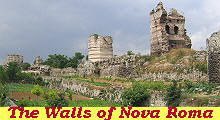  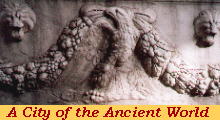 |
